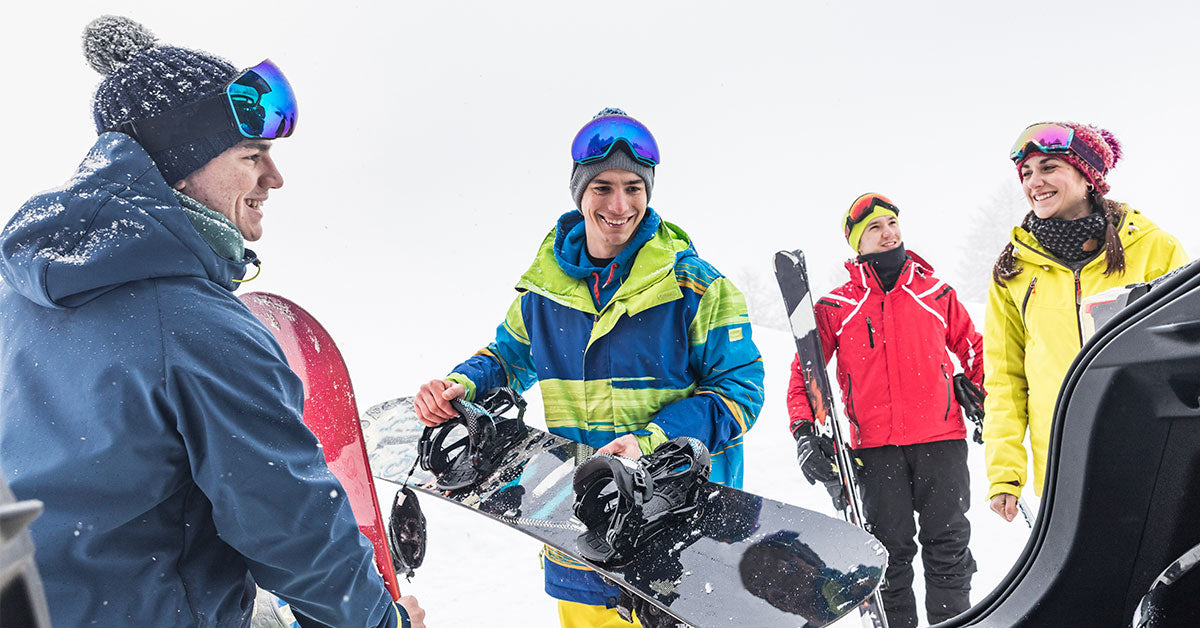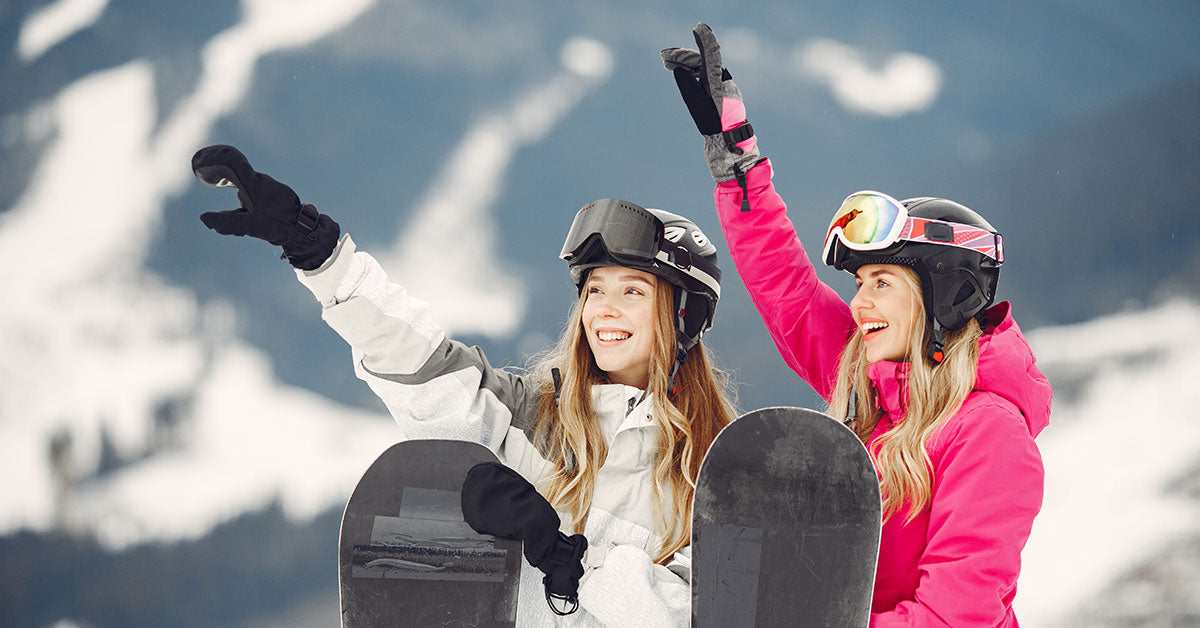
The most important elements of snowboarding equipment
Snowboard accessories are products that deserve just as much attention as the equipment itself. Our comfort and well-being on the slopes also depend on them. Furthermore, we can feel great and fashionable in clothes that perfectly match our style. However, the most important thing is functionality and how well they will support your winter fun. Where to start? What should you spend the largest portion of your budget on? What to look for when shopping? Let's start the guide!
By far the most important piece of snowboarding equipment is... boots! You might not have expected this. We often start with a helmet or jacket. These are, of course, also very important. However, boots are worth spending the most time and money on. Unfortunately, boots are often rented. Poorly fitting boots can affect the quality of your ride and the enjoyment of the slopes. Rental boots are often worn out and don't fit you perfectly. A sense of security, confidence, and comfort are essential for every snowboarder. It's also worth buying good socks to go with your boots. Remember, there are socks designed specifically for snowboarding. These will keep your feet from slipping in your boots. They'll also help prevent unpleasant odors after a long day of fun.
Now it's time to get dressed. When snowboarding, remember one rule: dress in layers! Each layer should be breathable, so you'll actually stay warm. It's not uncommon to hit the slopes in thermal underwear and a regular cotton sweatshirt. A snowboard jacket with a membrane is thrown over this. The sweatshirt will prevent the snowboarding clothes from "breathing." As for the membrane, the higher the value, the better. A Gore-Tex membrane guarantees protection for both the clothes and the rider. It's worth paying attention to this feature. The same goes for gloves. Look for ones with a Gore-Tex membrane. Invest in clothing from reputable brands, such as Burton. Burton snowboard clothing comes with a lifetime warranty, which is a testament to their quality. Choose from reputable manufacturers. The final piece of clothing is goggles. They protect your eyes from precipitation and bright sunlight, intensified by snow. It's best to buy ones with two lenses: for better and worse weather.
Time for the last, but equally important, element – safety! Helmets and back protectors are commonly used not only by beginner riders. A helmet, in particular, is an absolute must for anyone who wants to avoid accidents. It's also suitable for advanced snowboarders. The selection is vast, and you can find a helmet that's comfortable, well-designed, and above all, safe for your head. It protects against falls and collisions with other people on the slopes. Beginners should also equip themselves with wrist, tailbone, and hip protectors. Falls at the beginning of their snowboarding journey are common and painful. The body is sore for several days afterward, which can discourage you from this wonderful sport. It's worth allowing yourself more comfort and investing in a decent protector.
Now all that's left is to assemble your kit. Let's summarize! Start with your boots, and pay close attention to them. Your jacket and gloves should have a membrane. Also, equip yourself with breathable socks and thermal underwear. Finally, choose your goggles (with two lenses), helmet, and pads. You're ready to hit the slopes. Good luck!
By far the most important piece of snowboarding equipment is... boots! You might not have expected this. We often start with a helmet or jacket. These are, of course, also very important. However, boots are worth spending the most time and money on. Unfortunately, boots are often rented. Poorly fitting boots can affect the quality of your ride and the enjoyment of the slopes. Rental boots are often worn out and don't fit you perfectly. A sense of security, confidence, and comfort are essential for every snowboarder. It's also worth buying good socks to go with your boots. Remember, there are socks designed specifically for snowboarding. These will keep your feet from slipping in your boots. They'll also help prevent unpleasant odors after a long day of fun.
Now it's time to get dressed. When snowboarding, remember one rule: dress in layers! Each layer should be breathable, so you'll actually stay warm. It's not uncommon to hit the slopes in thermal underwear and a regular cotton sweatshirt. A snowboard jacket with a membrane is thrown over this. The sweatshirt will prevent the snowboarding clothes from "breathing." As for the membrane, the higher the value, the better. A Gore-Tex membrane guarantees protection for both the clothes and the rider. It's worth paying attention to this feature. The same goes for gloves. Look for ones with a Gore-Tex membrane. Invest in clothing from reputable brands, such as Burton. Burton snowboard clothing comes with a lifetime warranty, which is a testament to their quality. Choose from reputable manufacturers. The final piece of clothing is goggles. They protect your eyes from precipitation and bright sunlight, intensified by snow. It's best to buy ones with two lenses: for better and worse weather.
Time for the last, but equally important, element – safety! Helmets and back protectors are commonly used not only by beginner riders. A helmet, in particular, is an absolute must for anyone who wants to avoid accidents. It's also suitable for advanced snowboarders. The selection is vast, and you can find a helmet that's comfortable, well-designed, and above all, safe for your head. It protects against falls and collisions with other people on the slopes. Beginners should also equip themselves with wrist, tailbone, and hip protectors. Falls at the beginning of their snowboarding journey are common and painful. The body is sore for several days afterward, which can discourage you from this wonderful sport. It's worth allowing yourself more comfort and investing in a decent protector.
Now all that's left is to assemble your kit. Let's summarize! Start with your boots, and pay close attention to them. Your jacket and gloves should have a membrane. Also, equip yourself with breathable socks and thermal underwear. Finally, choose your goggles (with two lenses), helmet, and pads. You're ready to hit the slopes. Good luck!


